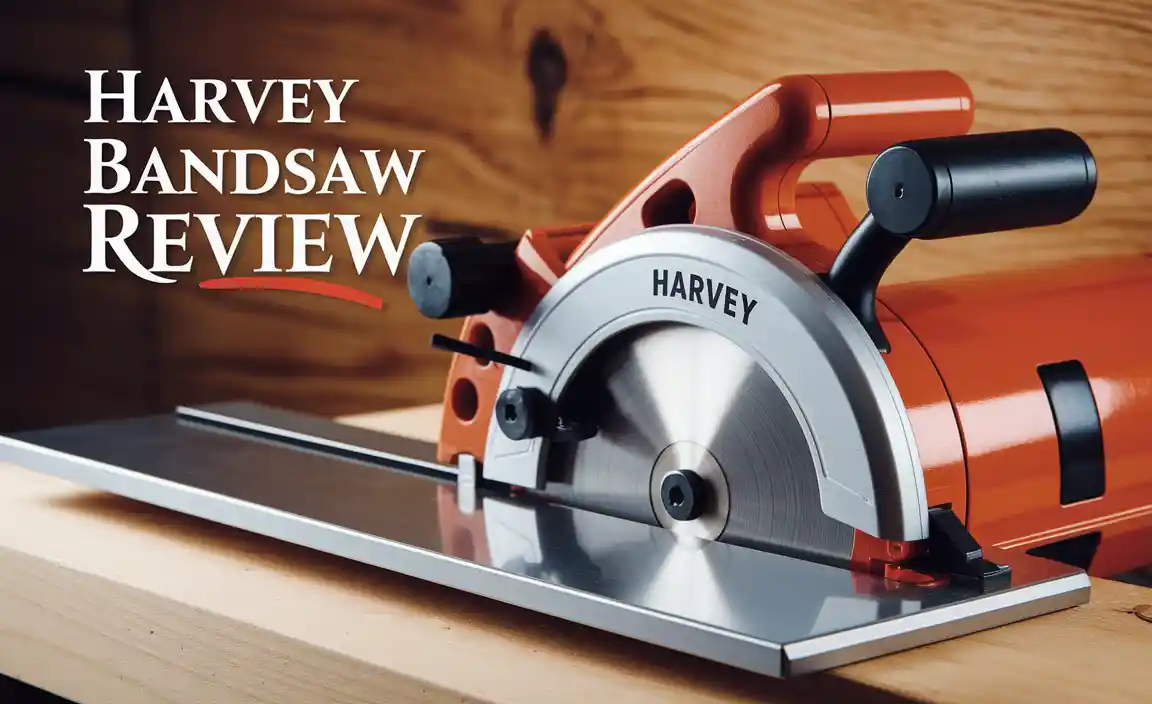The best framing nailer with depth adjustment allows you to precisely control nail depth for secure, flush finishes without damaging your wood. Look for models with easy-to-use, tool-free adjustment and a comfortable grip. This guide will help you find the perfect one for your projects!
Ever found yourself wrestling with a framing nailer, only to have nails sticking out too far or sinking too deep? It’s a common frustration, especially when you’re aiming for that perfect, clean look on your DIY projects. Getting the nail depth just right can make all the difference between a professional finish and a job that looks a bit… well, DIY. Don’t worry, though! With the right tool and a little know-how, you can nail it every time. This guide is here to demystify the world of framing nailers and help you find the best one with that all-important depth adjustment feature. We’ll walk through what to look for, how it works, and even give you some top picks to consider. Get ready to tackle your next project with confidence!
Table of Contents
Why Depth Adjustment is a Game-Changer for Framing Nailers
So, why is this depth adjustment thing such a big deal? Think of it like this: not all wood is created equal. Some is soft and easily punctured, while other types are a bit tougher. You might be working with soft pine for framing a shed, or perhaps hardwoods for a sturdy deck frame. In these different scenarios, the amount of force needed to drive a nail to the perfect depth will vary. Without depth adjustment, you’re essentially stuck with one “one-size-fits-all” setting, which rarely fits perfectly.
The ability to adjust the nail depth gives you incredible control. It allows you to:
- Prevent over-driving nails, which can split the wood or create unsightly dimples that are tough to cover.
- Ensure nails are sunk just right – flush with the surface or slightly countersunk – for a clean, professional appearance without compromising structural integrity.
- Work with a wider variety of wood types and thicknesses, from delicate trim to robust structural lumber.
- Save time and frustration by avoiding the need to manually reset or repair poorly driven nails.
In short, a framing nailer with a good depth adjustment feature is an investment in precision, efficiency, and the overall quality of your woodworking. It’s a tool that helps you move from “good enough” to “really, really good.”
Understanding How Depth Adjustment Works
The magic behind depth adjustment is surprisingly simple. Most framing nailers with this feature use a mechanism that controls how far the piston and driver blade can travel into the tool. When you adjust the depth, you’re essentially changing the position of a stop or a regulator that dictates this travel distance.
Here’s a simplified look at the common types of depth adjustment:
- Tool-Free Dial/Knob: This is the most user-friendly and common type. You’ll typically find a rotating knob or a lever near the nose of the nailer or on the tool’s body. Turning it in one direction (often marked with “+” or higher depths) makes the nails sink deeper, while turning it the other way (marked with “-” or shallower depths) reduces the penetration. This is the gold standard for most DIYers.
- Tool-Required Collars/Spacers: Some older or more basic models might require you to loosen a collar or add/remove spacers around the nose of the nailer to change the depth. This is less convenient and usually requires a separate tool (like an Allen wrench). We generally recommend avoiding these for ease of use.
The key is to look for a system that is intuitive and can be adjusted quickly, ideally without needing to disengage the tool from your work surface. A good depth adjustment mechanism should feel smooth and offer a noticeable difference with each setting.
What to Look For in the Best Framing Nailer with Depth Adjustment
When you’re shopping for the “best framing nailer with depth adjustment feature,” there are several key aspects to consider beyond just the adjustment mechanism itself. These details can significantly impact your experience and the tool’s overall performance.
1. Power and Nail Compatibility
A framing nailer’s primary job is to drive large nails quickly and powerfully. Ensure the nailer you choose is robust enough for the types of framing you plan to do. Also, confirm the type and size of nails it accepts. Most framing nailers use either 2-inch to 3-1/2-inch nails, with common angles being 21-degree (plastic collated) or 30-degree (paper collated). The angle affects how many nails fit in a magazine and how the tool is designed.
2. Power Source: Pneumatic vs. Cordless (Battery or Fuel)
This is a big decision that impacts portability, power, and maintenance.
- Pneumatic (Air-Powered): These are the traditional workhorses. They require an air compressor and a hose.
- Pros: Typically more powerful, lighter in hand, less expensive initial tool cost, reliable.
- Cons: Requires an air compressor and hose, limiting portability.
- Cordless (Battery-Powered): These use rechargeable batteries to power a motor that drives the nail.
- Pros: Highly portable, no hoses or compressors needed, quick to get started.
- Cons: Can be heavier with the battery, generally more expensive upfront, battery life can be a limitation for heavy use.
- Cordless (Fuel-Powered): These use a combination of a small fuel cell (like propane) and a battery. The fuel ignites to drive the nail.
- Pros: Very portable, powerful, fast firing.
- Cons: Fuel cells need to be replaced, can produce exhaust fumes, often more expensive.
For DIYers, battery-powered nailers are often the most convenient choice due to their ease of use and portability, provided they offer sufficient power for your needs and the depth adjustment is effective.
3. Ergonomics and Weight
You’ll be holding this tool for extended periods, so comfort is key. Look for:
- A comfortable, non-slip grip.
- Well-balanced weight distribution.
- A tool that doesn’t feel overly bulky or unwieldy.
If possible, try holding the nailer in a store to see how it feels in your hand. A lighter tool can help reduce fatigue, especially when working overhead or on ladders. For comprehensive safety guidelines on using power tools, the Occupational Safety and Health Administration (OSHA) offers valuable resources, including information on personal protective equipment (PPE) and safe operating procedures. You can explore their publications on the OSHA website.
4. Magazine Capacity and Loading
How many nails can the magazine hold? A higher capacity means fewer interruptions for reloading. Also, consider how easy it is to load nails – a simple, jam-free loading mechanism will save you a lot of headaches.
5. Firing Mode: Sequential vs. Contact Actuation
- Sequential (Single Fire): Fires one nail only when the trigger is pulled and the safety tip is depressed. This offers the most precision and safety.
- Contact Actuation (Ramp Fire): Fires a nail every time the safety tip is depressed, as long as the trigger is held down. This is much faster but requires more care to avoid accidental firing.
Many modern nailers offer a selector switch so you can choose between modes, giving you versatility for different tasks. For framing, where accuracy is paramount, the sequential mode is usually preferred for initial placement.
6. Durability and Build Quality
Look for reputable brands known for producing reliable tools. Features like a durable housing (e.g., magnesium or aluminum) and a hardened steel nose can indicate a tool built to last.
Top Features to Prioritize in a Framing Nailer with Depth Adjustment
When you’re scanning spec sheets or product descriptions, keep an eye out for these specific features that make a framing nailer with depth adjustment truly shine:
- Tool-Free Depth Adjustment: As mentioned, this is non-negotiable for ease of use. It should be a simple twist of a dial or a flip of a lever.
- Depth Adjustment Range: Does it offer enough fine-tuning for various wood densities and project needs? Some offer micro-adjustments, which are excellent.
- Jam Clearing: Look for a tool-less jam clearing feature. This means you can quickly and easily remove a jammed nail without needing extra tools. A quick-release nose or a similar mechanism is ideal.
- Depth of Drive Lock: Some higher-end models may have a feature to lock the depth setting you’ve chosen, preventing accidental changes if you bump the adjustment mechanism.
- Dry Fire Lockout: This feature prevents the nailer from firing when the magazine is empty. It saves wear and tear on the tool and prevents you from wasting air or battery power on empty “shots.”
- Depth Indicator: While not standard, some advanced models might offer a visual indicator showing the current depth setting.
Recommended Framing Nailer Models (with Depth Adjustment in Mind)
Choosing the “best” framing nailer is subjective and depends on your specific needs and budget. However, here are a few types and brands that consistently perform well and offer effective depth adjustment. While specific model numbers change, these manufacturers are known for quality framing nailers with this feature.
Pneumatic Framing Nailers
For those who already have a compressor or prefer the raw power and lighter tool weight of air-powered options:
- DEWALT DW325PL: Often praised for serious DIYers and pros alike. Features excellent depth adjustment and a comfortable grip. It’s a robust option for heavy use.
- Metabo HPT NR90AES1: This brand (formerly Hitachi) is known for reliability. Their nailers typically have superb depth control and are built tough. The tilt-out magazine is a thoughtful touch for clearing jams.
- BOSTITCH N66C-1: A classic in the framing nailer world. While some might have more advanced depth adjustment systems, its overall performance and durability are undeniable, and its adjustment is generally effective for most tasks.
Cordless Framing Nailers
For ultimate portability and convenience, especially for smaller jobs or remote locations:
- DEWALT 20V MAX XR Cordless Framing Nailer (e.g., DCFN289): One of the most popular cordless options. It offers good power for its class and a simple, effective depth adjustment. Battery integration means no hoses.
- Metabo HPT 18V Cordless Brushless Framing Nailer (e.g., NT1865DMAS): Known for strong performance and impressive battery life. Its depth adjustment is generally precise and easy to use.
- Paslode Cordless 16-Gauge LiHD Straight Finish Nailer (Note: This is a finish nailer, not framing. For framing, look at Paslode’s fuel-powered framing nailers like the CF325XP): Paslode is a leader in fuel-powered cordless tools. Their framing nailers deliver consistent power and have user-friendly depth control. The CF325XP is a popular choice.
Key Considerations When Comparing Models
When looking at specific models:
- User Reviews: Pay close attention to what other users say about the depth adjustment. Is it consistent? Is it easy to operate?
- Tool-Free Capabilities: Prioritize models that offer tool-free jam clearing and depth adjustment.
- Warranty: A good warranty can be a sign of a manufacturer’s confidence in their product’s durability.
To ensure you’re choosing a tool that meets safety standards, always check for certifications like those from Underwriters Laboratories (UL) or equivalent bodies. These certifications indicate that the tool has been tested for electrical and mechanical safety.
How to Use Your Framing Nailer’s Depth Adjustment Effectively
Mastering the depth adjustment isn’t just about having the feature; it’s about using it correctly. Here’s a step-by-step approach:
Step 1: Understand Your Materials
Before you even pick up the nailer, consider the wood you’re working with. Are you framing with soft pine, dense oak, or pressure-treated lumber? Softer woods will require less depth adjustment (shallower setting), while denser woods may need a deeper setting to ensure full penetration.
Step 2: Set Up Your Nailer
If it’s pneumatic, connect your air hose and set the compressor to the recommended PSI for your nailer (usually found in the manual). If it’s cordless, ensure your battery is charged.
Step 3: Load Your Nails
Insert the correct type and size of framing nails into the magazine. Ensure they are seated properly.

Step 4: Perform a Test Shot
Find a scrap piece of the exact same material you’ll be using for your project. Don’t skimp on this step – it’s crucial for getting your settings right!
Step 5: Adjust the Depth (First Pass)
Start with a medium setting on your depth adjustment. Place the nose of the nailer against the scrap wood, depress the safety tip against the surface, and pull the trigger. Observe how the nail penetrates.
Step 6: Analyze the Result and Readjust
- Nail is sticking out or not fully seated: Turn the depth adjustment knob to a deeper setting (usually marked with a “+” or higher numbers).
- Nail is driven too deep (e.g., splitting the wood or leaving a large dimple): Turn the depth adjustment knob to a shallower setting (usually marked with a “-” or lower numbers).
- Nail is flush or slightly countersunk, and the wood isn’t damaged: Perfect! You’ve found your setting.
Step 7: Repeat and Fine-Tune
Repeat steps 5 and 6 until you achieve the desired depth consistently. It might take a few tries to get it just right, especially if you’re switching between different wood types or thicknesses during a project.
Step 8: Fire on Your Project
Once you’re confident with the test shots, move to your actual project. Periodically check your nail depth, especially if you encounter a knot or a change in the wood’s density. It’s good practice to do a test shot on a hidden area or scrap piece whenever you change the material or if you suspect the setting might have been bumped.
Safety First: Always Prioritize a Safe Working Environment
A framing nailer is a powerful tool, and safety should always be your top priority. Here are some essential safety tips:
- Wear Safety Glasses: Always wear ANSI-approved safety glasses or goggles to protect your eyes from flying debris or nails.
- Hearing Protection: Nail guns can be loud. Use earplugs or earmuffs to protect your hearing.
- Gloves: Wear work gloves to protect your hands from splinters and provide a better grip.
- Proper Footwear: Wear sturdy, closed-toe shoes.
- Know Your Tool: Read the manufacturer’s manual thoroughly before operating the nailer. Understand its features, safety mechanisms, and maintenance requirements.
- Secure Your Workpiece: Ensure your lumber is stable and won’t move when you drive a nail.
- Never Point the Nailer at Yourself or Others: Treat the nailer like a loaded firearm.
- Keep Fingers Off the Trigger: Only place your finger on the trigger when you are ready to fire. Use sequential firing mode for precision.
- When Not in Use: Disconnect the air hose (pneumatic) or remove the battery (cordless) when the nailer is not in use, when changing nails, or when performing maintenance.
- Work Area: Keep your work area clean and free of obstructions.
For detailed safety information, the U.S. Consumer Product Safety Commission (CPSC) provides regulations and advisories on power tool safety, which are invaluable for DIYers.
Troubleshooting Common Depth Adjustment Issues
Even with the best tools, you might run into a snag. Here are some common depth adjustment problems and how to fix them:
Issue: Nails consistently sink too deep, regardless of setting.
Possible Causes:
- Incorrect air pressure (


